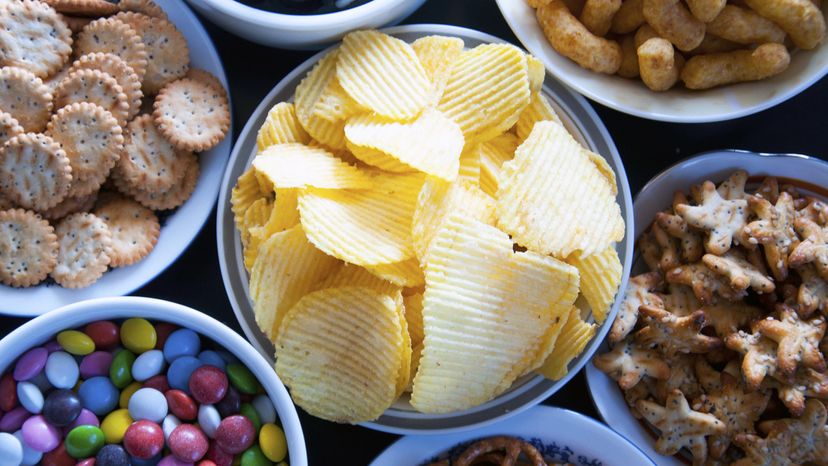“
 “It’s easy to burn through far more than one serving of a processed snack in a sitting — and that’s by design. ©CAROTUR/ISTOCK/THINKSTOCK
“It’s easy to burn through far more than one serving of a processed snack in a sitting — and that’s by design. ©CAROTUR/ISTOCK/THINKSTOCK
The late night munchies. We’ve all had them. And we’ve all given into them — sitting on the couch, watching a movie, and suddenly realizing we’ve eaten nearly an entire bag of chips. How did that happen?
Here’s some food for thought (pun intended). What if we told you that a bag of chips is designed for exactly that purpose — for you to empty it without thinking?
Most of us won’t take an entire chocolate cake out of the fridge and absentmindedly eat the whole thing, but chips and other processed foods are a different story. Why? It’s all about something called the "bliss point."
The bliss point of processed food is the point where food reaches the level of being as delicious as possible, yet not so satisfying that we don’t want more. To take it back to the chocolate cake example, a chocolate cake will end up being sweet enough at some point that we’ll feel satisfied and stop eating. With processed (or junk) food, however, we never really hit that "my taste buds are sated" level.
How do food scientists formulate the foods we’ll like the most?
The bliss point is a ratio of three nutrients our bodies are programmed to seek out: fat, sugar and salt. These three compounds trigger all 10,000-plus of our taste buds and send a message to the pleasure receptors of our brains that makes us think, "More! More!" Natural foods also have these three nutrients, but not in the perfect bliss point ratio where we don’t feel satisfied. Science, however, has taken care of that.
Fat, sugar and salt all work together to make food taste better and make us want more. Fat gives foods like chips and crackers a smoother texture. Salt masks the chemical taste of processed food and is the cheapest spice around. Sugar hits the pleasure points in our brains and increases the shelf life of products. Food manufacturers can tweak the ratios of fat, sugar and salt, and then exhaustively taste test products until they reach the right bliss point with consumers. Bliss points determine a food’s crave level, which in turn determines sales and profit.
One well-known example of bliss point research is Dr. Pepper soda. When attempting to formulate a new flavor, the company went through 61 formulas and 4,000 tasting events, which allowed their food scientists to continually tweak the recipe until they found the ultimate bliss point. The resulting soda was Cherry Vanilla Dr. Pepper, one of the company’s most successful products ever [source: Moss].
So the next time you find yourself on the couch with your hand in an empty Doritos bag, blame science.
Lots More Information
Related Articles
- Do fat-free foods really make you fat?
- What is carrageenan?
- How does olestra work?
Sources
- Andrews, Julie D. "What Is Bliss Point? (Besides the Reason You’re Addicted to Doritos)." The Blot Magazine. Mar. 30, 2014. (Jul. 26, 2014) http://theblot.com/what-bliss-point-besides-reason-addicted-doritos-7716219
- Burke, Jeffrey. "Cereal With 70% Sugar Hooks Kids on Junk-Food Bliss Point." Bloomberg. Mar. 17, 2013. (Jul. 26, 2014) http://www.bloomberg.com/news/2013-03-17/cereal-with-70-sugar-hooks-kids-on-junk-food-bliss-point.html
- Moss, Michael. "The Extraordinary Science of Addictive Junk Food." The New York Times." Feb. 20, 2013. (Jul. 26, 2014) http://www.nytimes.com/2013/02/24/magazine/the-extraordinary-science-of-junk-food.html?pagewanted=all&_r=2&
- Thompson, Claire. "Salt, sugar, and fat: Why we can’t quit junk food’s holy trinity." Grist.org. Mar. 21, 2013. (Jul. 26, 2014) http://grist.org/food/salt-sugar-and-fat-why-we-cant-quit-junk-foods-holy-trinity/


